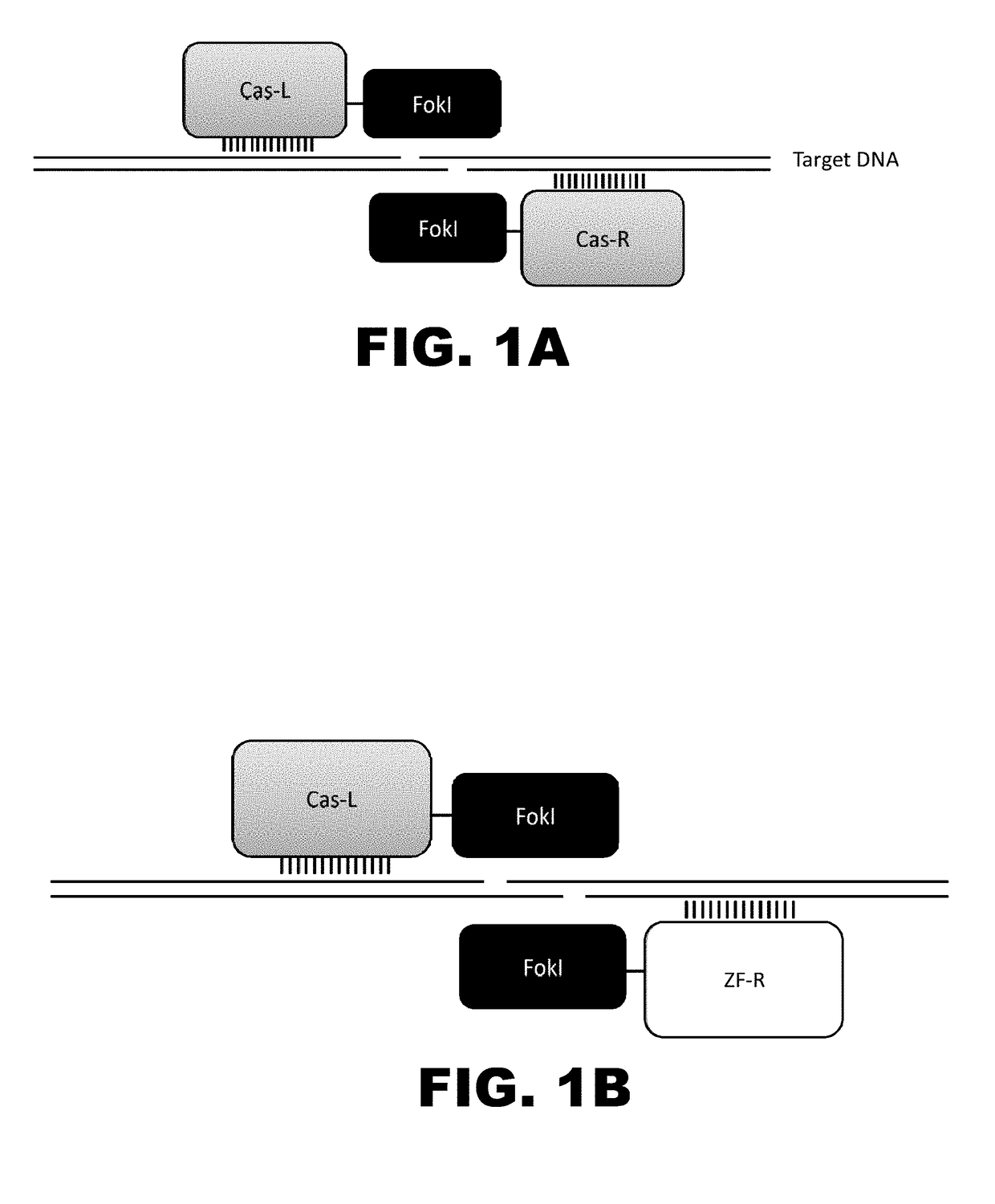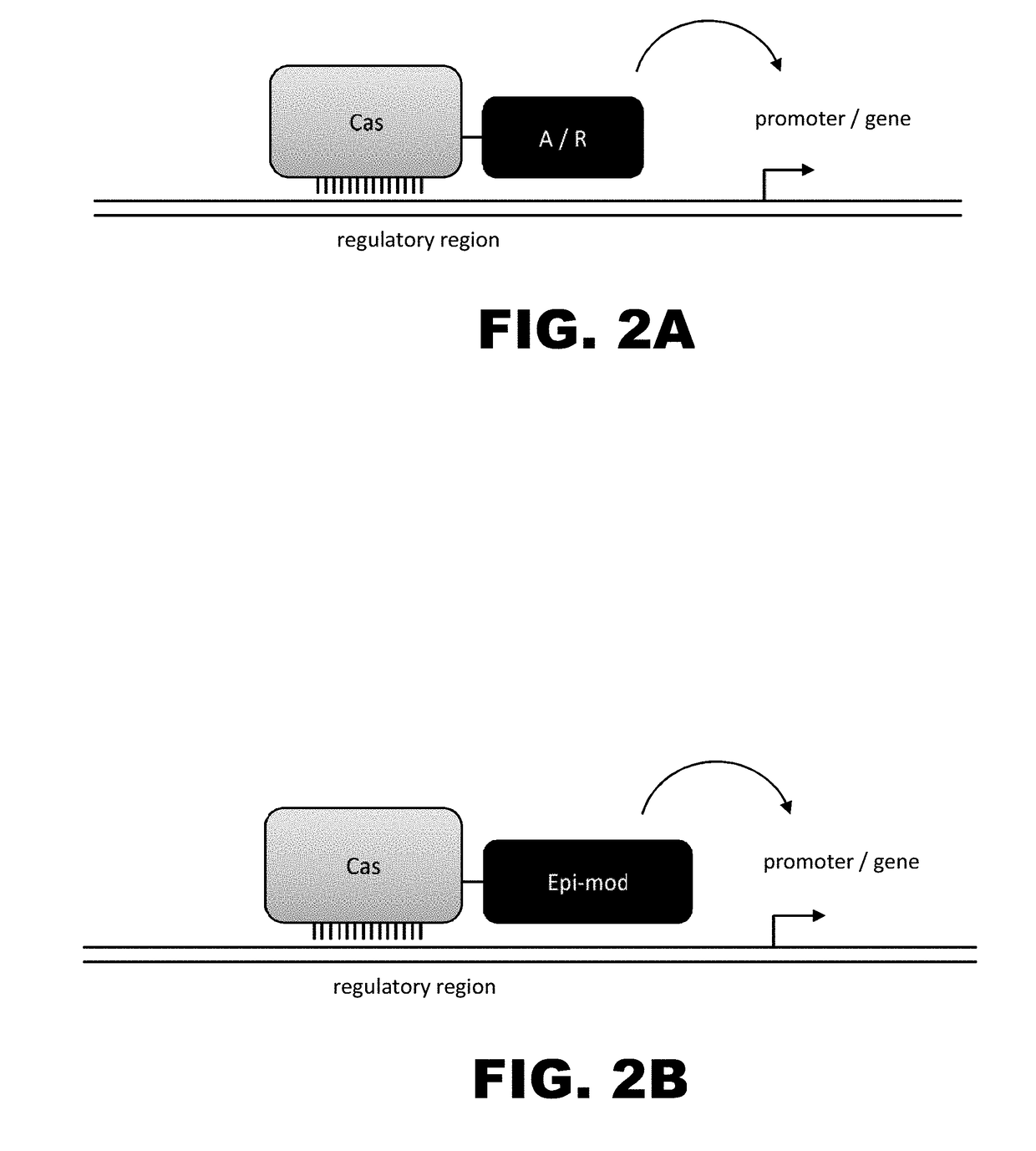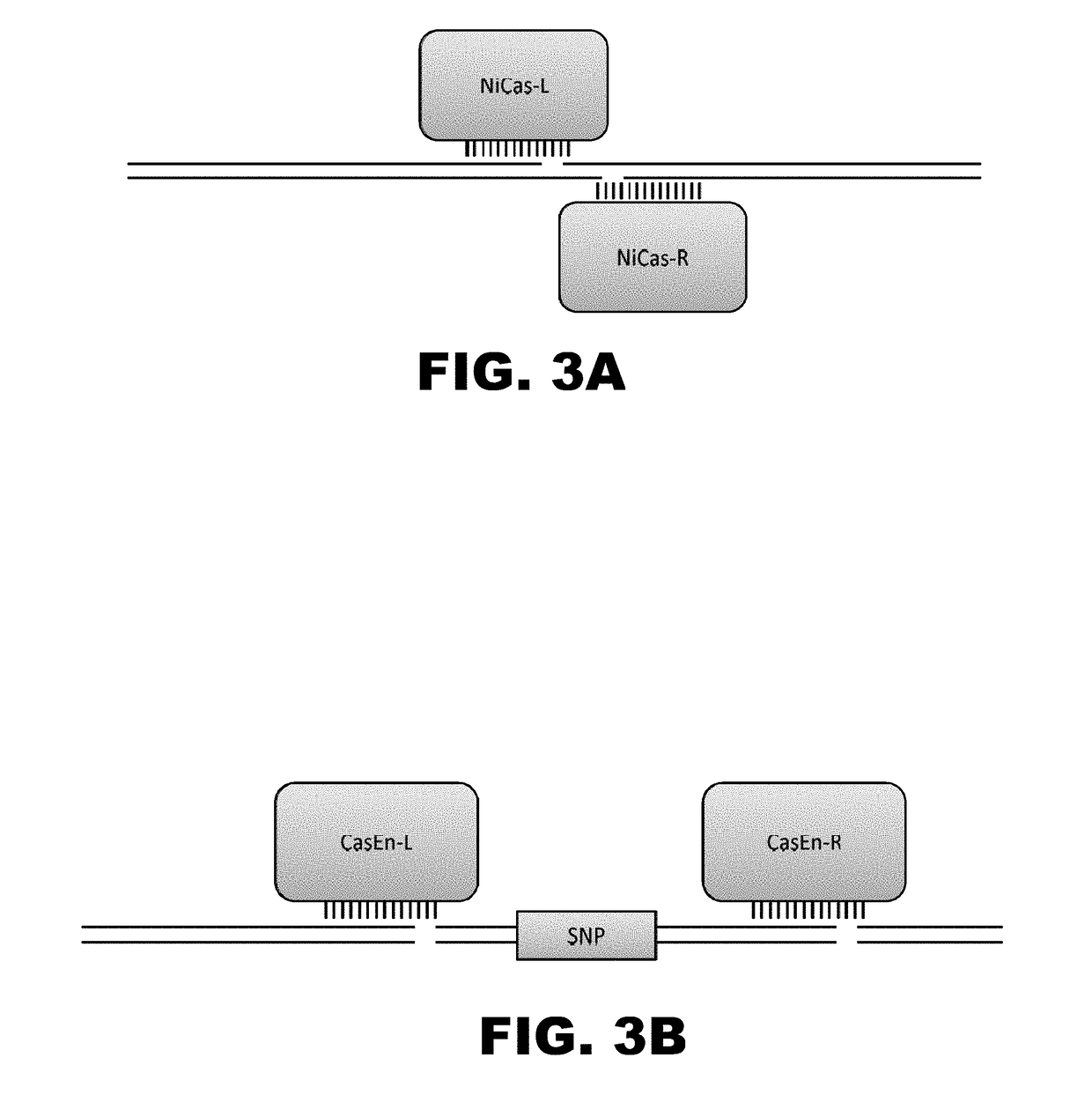Crispr-based genome modification and regulation
a genome modification and genome technology, applied in the field of targeted genome modification, can solve the problems of high cost and time-consuming preparation of custom-designed nucleases
- Summary
- Abstract
- Description
- Claims
- Application Information
AI Technical Summary
Benefits of technology
Problems solved by technology
Method used
Image
Examples
Embodiment Construction
[0010]The present disclosure provides RNA-guided DNA-binding fusion proteins. The fusion proteins comprise CRISPR / Cas-like proteins or fragments thereof and effector domains. Suitable effector domains include, without limit, cleavage domains, transcriptional activation domains, transcriptional repressor domains, epigenetic modification domains, as well as other domains discussed herein. Each fusion protein is guided to a specific chromosomal sequence by a specific guiding RNA, wherein the effector domain mediates targeted genome modification or gene regulation. In one aspect, the fusion proteins can function as dimers thereby increasing the length of the target site and increasing the likelihood of its uniqueness in the genome (thus, reducing off target effects). For example, endogenous CRISPR systems modify genomic locations based on DNA binding word lengths of approximately 14-15 bp (Cong et al., Science, 2103, 339:819-823). At this word size, only 5-7% of the target sites are uni...
PUM
| Property | Measurement | Unit |
|---|---|---|
| time | aaaaa | aaaaa |
| length | aaaaa | aaaaa |
| lengths | aaaaa | aaaaa |
Abstract
Description
Claims
Application Information
 Login to View More
Login to View More - R&D
- Intellectual Property
- Life Sciences
- Materials
- Tech Scout
- Unparalleled Data Quality
- Higher Quality Content
- 60% Fewer Hallucinations
Browse by: Latest US Patents, China's latest patents, Technical Efficacy Thesaurus, Application Domain, Technology Topic, Popular Technical Reports.
© 2025 PatSnap. All rights reserved.Legal|Privacy policy|Modern Slavery Act Transparency Statement|Sitemap|About US| Contact US: help@patsnap.com



